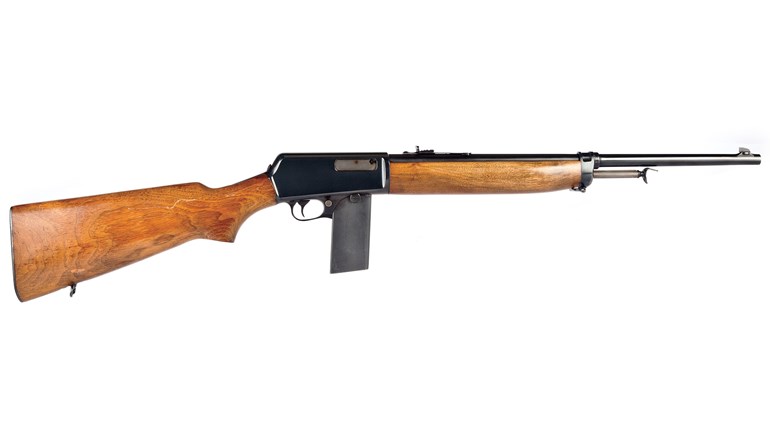
E. R. Shaw’s entry into the AR-10 world, the ERS-10, is a big beast of a rifle. It’s designed for long-range shooting, and with a 24-inch barrel it clocks in at exactly 10 pounds (with an empty magazine). Add a big scope for use at distance and a few cartridges and it’s 12 to 13 pounds sitting steady on the bench. That weight, combined with the impressive muzzle brake, makes recoil from the mild-mannered 6.5 Creedmoor quite light and manageable. It also aids in spotting your long-range hits.
Receivers are machined from 7075-T6 aluminum forgings with a matte-black anodized finish. As this is a semi-custom gun, you can have the gun finished in Cerakote if you choose by requesting it when you order the rifle. The upper is a flattop design with a full-length rail. There is a forward assist and a dustcover. The lower features a wire EDM cut mag well. E. R. Shaw says this is to avoid the stresses and distortion from broaching, which makes sense. The trigger guard is integral and expanded a bit to allow operation with gloves. The gun accepts DPMS-pattern magazines and comes with one 20-round Magpul PMag. The rifle’s controls are right-hand only.

The barrel comes in any length desired, from 20 to 24 inches, and the customer specifies the length they want when ordering the rifle. I ordered the longest, because I wanted all the velocity I could muster from the 6.5 Creedmoor. The button-rifled barrel is made from 416R stainless steel and features E.R. Shaw’s patented spiral fluting. The barrel is finished with a high polish while the flutes are bead-blasted matte.
The ERS-10 is currently offered in two cartridges: .308 Win. and 6.5 Creedmoor, with twist rates of 1:10 inches and 1:8 inches respectively. Both are well-suited to stabilizing heavy, long-range bullets. However, I am sure that more cartridges will be offered in the future, as E. R. Shaw has the tooling to make and configure barrels in just about any combination imaginable.

The bolt is coated with nickel-boron for better function and ease of cleaning. The 15-inch handguard is a one-piece T-MOD heat shield, CNC machined from 6061 aluminum and coated with a hard-anodized finish. The handguard is freefloated and has a full-length rail. The T-Slot design allows for mounting accessory rails in multiple positions simply by loosening the rail screws and sliding to the desired location. The top rail is laser engraved with each slot numbered.
The E. R. Shaw Custom Muzzle Brake is polished stainless steel. It has two angled rectangular chambers with four holes (two per chamber) on top. The bottom is solid to minimize dust and debris when shooting while prone.
This is, of course, a direct-impingement configuration, just as Saint Stoner intended. The long gas tube measures 14.5 inches from the center of the gas block to the end of
the tube.

My only serious complaint is the trigger. It’s mil-spec with a creepy, catching, hitching, glitching 7 pound, 2 ounce pull weight. This is no good for precision work and I am sure it was a negative factor in the size of the groups when testing for accuracy. It’s hard to do precision work when you need to pause between shots to let the muscle cramps subside. Of course, adding an aftermarket trigger with a clean, crisp 3- to 4-pound pull weight solves that problem. The six-position, adjustable buttstock is a Magpul ACS and has a lock to help maintain the selected position. It has the Magpul secret compartment fitted with a spring-loaded latch. Inside this one are the screw and fitting to install a quick-release sling attachment, which can fit on either side of the buttstock. The stock is also slotted to accept a permanently attached sling. The buttpad is quarter-inch thick, hard rubber. The standard, mil-spec type grip is hard plastic with checkered sides.
I think that with a better trigger and a bit of experimenting with ammo this rifle could easily attain sub-MOA accuracy. The rifle does have some ammo preferences. One premium load I know from past experience to be extremely accurate in other rifles shot poorly. This is common, as rifles are individuals and often have preferences. Oddly enough, most of the other ammo products I tested proved to be close to each other in accuracy with just the expected small differences in group size. Why is that?
Barrel rifling was invented in Augsburg, Germany in 1498. It was believed early on that the accuracy improvement was because the devil could not ride a spinning bullet and steer it away from the target. I am not sure we have progressed all that much in understanding the intricate ballistic mysteries of rifles today. Sometimes, it’s just the way it is.
If your interests are long-range shooting with a semi-automatic gas gun, this is a rifle that can get it done. Competition, hunting or just busting targets in the next township, the ERS-10 is an excellent AR-pattern long gun at a reasonable price.





































